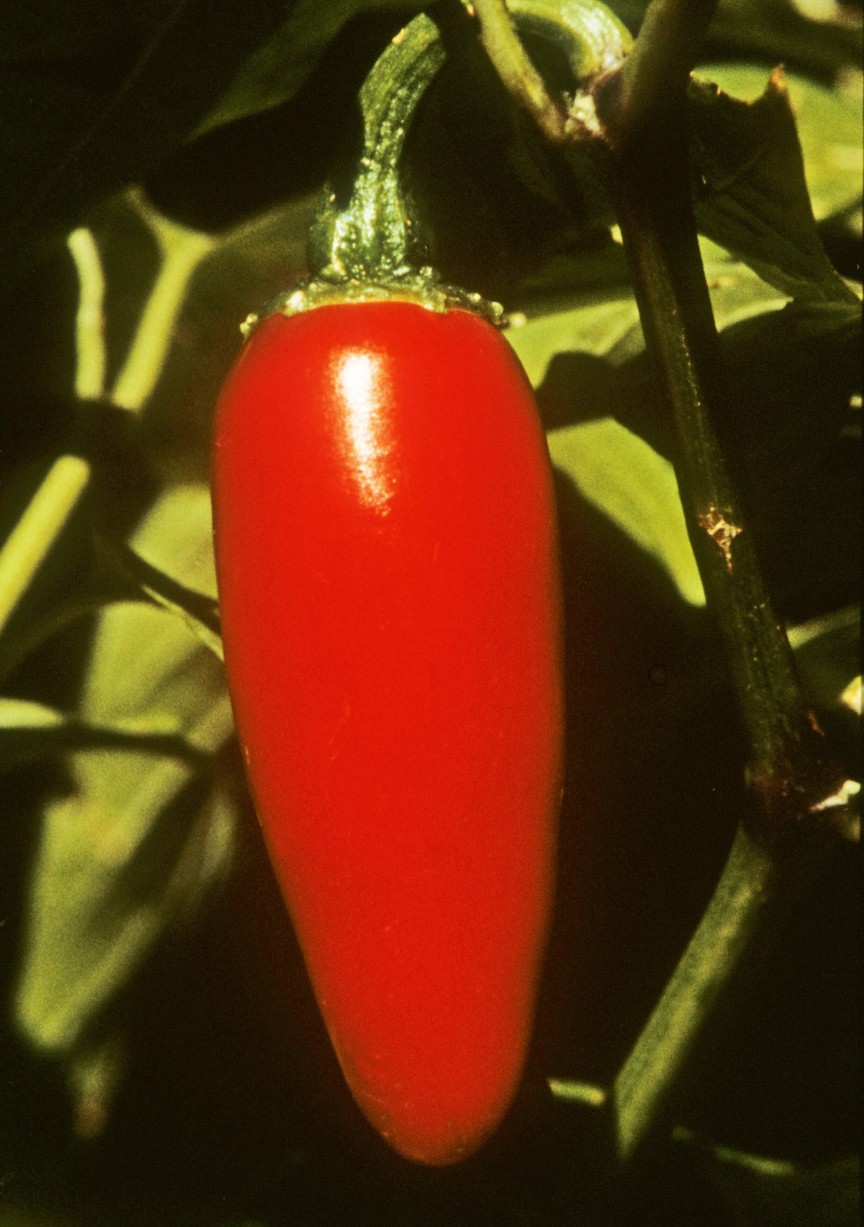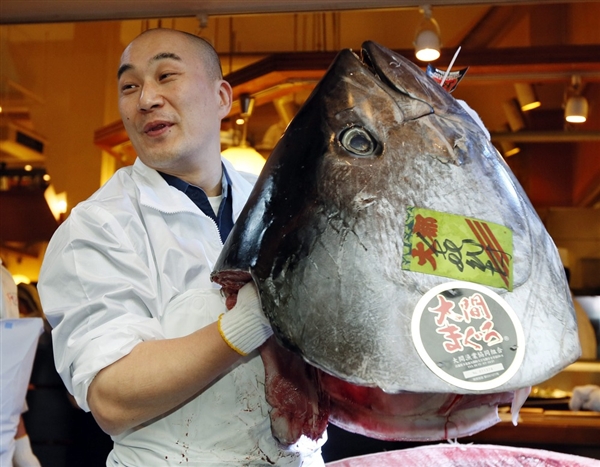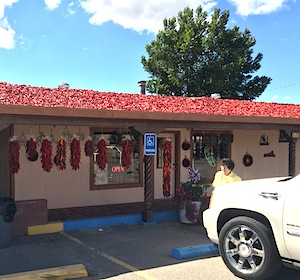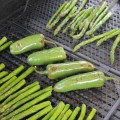By José C. Marmolejo
A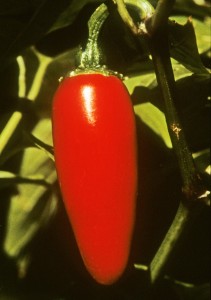 ccording to most chile connoisseurs, cuaresmeño is the original name for our friend the jalapeño—or Xalapeño to be proper. Cuaresmeño means related to cuaresma or Lent, the season when it was harvested and consumed fresh before modern agriculture made it available year-round. This name was given in El Altiplano or Central Mexico. So far, nobody argues with this theory.
ccording to most chile connoisseurs, cuaresmeño is the original name for our friend the jalapeño—or Xalapeño to be proper. Cuaresmeño means related to cuaresma or Lent, the season when it was harvested and consumed fresh before modern agriculture made it available year-round. This name was given in El Altiplano or Central Mexico. So far, nobody argues with this theory.
Xalapa de Enríquez, the capital city of the State of Veracruz, better known as Jalapa, is located in Central Veracruz, a lush region that produces delicacies such as Mole de Xico and the famous Coatepec coffee. This is the area where cuaresmeños were produced and consumed fresh. There however, cuaresmeño is called names like chile verde, gordo or huachinango—because its red color at maturity—all these common names are used by locals. Now, as Catholics weren’t supposed to eat meat during Lent, the solution was to stuff cuaresmeños with cheese or fish while taking advantage of its abundance that time of the year.
So far so good, everybody agrees on the above. Enter Raquel Torres Cerdán, a Mexican anthropologist, traditional cooking expert, and director of “Acuyo,” a cooking school in Jalapa. In a recent telephone conversation, she tells us a different story: around 1930 in Jalapa, there was an imported foods store named “La Xalapeña” owned by the Jiménez, a family of Spanish immigrants. In this store they started preserving the cuaresmeños in vinegar to extend the availability seasonally. This technique resulted in a new food experience. While extending the life of the cuaresmeño, a new flavor was created and was widely accepted by the local customers who requested more and more to ship and share to friends and relatives far away, and tourists bought them as souvenirs. After this business success, the store, then operated by Don Mario Jiménez Guerra (1931-2012), decided to can the cuaresmeños en vinagre, so they could be safely shipped to other cities and business could expand. For this purpose, he devised a small canning machine. The cans had the store name “La Xalapeña” printed in their labels which with time became a well known brand. From then on, the contents were called chiles xalapeños in other cities. Don Mario was a member of the third—and last—generation of the Jiménez dynasty to operate La Xalapeña store which originated this popular product.
Today, jalapeños are popular in Europe too. Cans with pickled green chiles are being imported from Turkey and Asia, and are labeled “Jalapeños”. The cans even display a sombrero in their labels! The Mexican Association of Food Packers is now appealing to the European Union to recognize the geographical origin and denomination for jalapeños—and chipotles—to be Mexico only. This trade organization claims that the quality of the Mexican chiles is superior to those of other countries. Chiles today are part of the list of food products—along with cheeses and wines—that the European Community and Mexico are discussing their denomination and labeling in their free trade agreement.
In the U.S.A. jalapeños have been popular for decades. They were imported by farm workers to spice their light flavored American diet and became an important part of “nostalgia food” along with tortillas, fried rice, and boiled beans. Canned jalapeños were easy to transport, needed no refrigeration, and a small can would go a long way. As other immigrants’ foods, Mexican food caught on in the mainstream, specially in the southern border states. Soon jalapeños were cultivated in Texas, New Mexico and California, states with high populations of what started as migrant workers, later became home of permanent residents in the middle of the last century, in the most benign climate in the U.S.A. Today, the majority of the U.S. commercial jalapeño supply is grown in New Mexico, Texas, and California, Mexico however, remains the main supplier of fresh and canned Jalapeños for the U.S. market.
Since the consumption of chiles has been growing steadily in the U.S., funding for research has found its way to the The Chile Pepper Institute in New Mexico State University at Las Cruces (NMSU), where under the direction of Dr. Paul Bosland, they have introduced among other varieties, the “NuMex Jalmundo”, a hybrid product of jalapeño and Bell Pepper that can be stuffed and it is not as fiery as other jalapeño varieties. This is only a small part of the work done at NMSU to produce chile varieties that better suit the American palate, and that have made the jalapeño the most popular chile in the USA
According to the USDA, per capita consumption of spicy chiles in the United States more than doubled between 1980 and 2011. This trend I’m afraid has not reversed, and our popular friend the jalapeño was the first chile that traveled into space aboard a NASA Space Shuttle!
Now, while we are used to consume jalapeños pickled—slices, strips, chopped or whole—there are other interesting applications. How about jalapeño cilantro rice, tuna-stuffed jalapeños, or mushroom, cheese and jalapeño omelettes among others? If you want to try any of these fiery combinations, we supply the recipes below. Provechito!
Recipes with Jalapeños
Note the three recipes below require seeded and deveined cooked jalapeños: 3 to 5 minutes boiled or baked. Do not peel the jalapeños.
Cilantro Jalapeño Rice
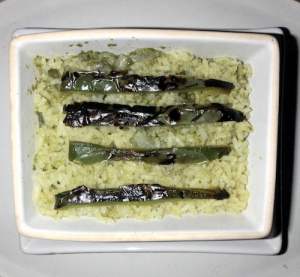
The green rice resulting from this recipe is appealing to the eye and the cilantro jalapeño fragrance of this dish is memorable.
Ingredients
2 cups water
1 cup rice
1 tablespoon of butter or vegetable oil
1 teaspoon salt
1 to 3 sprigs of fresh cilantro chopped
1 to 3 cooked jalapeños in strips
Instructions
Bring water to boil and add the rice, oil, butter or oil, salt, cilantro and the jalapeños. Simmer for 20 minutes uncovered, stirring occasionally. Enjoy the aroma and flavor.
Yield: 6 servings
Heat level: Medium to Hot
Tuna-Stuffed Jalapeños
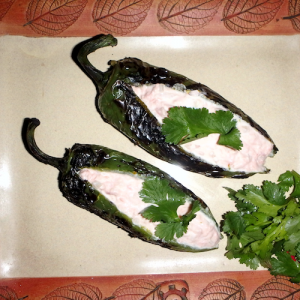
This is a low calorie dish that’s easy to prepare and fun to eat. Could be an appetizer, side dish or a main course. It’s a good dish for a spicy conversation.
Ingredients
6 big and fat jalapeños
12 ounces tuna
1 tablespoon mayonnaise or olive oil (optional)
2 slices of fresh onion chopped
6 olives chopped
4 slices red bell pepper, chopped
Sour cream for garnish
Pinch of salt
Instructions
Open lengthwise the chiles with a paring knife. Carefully remove seeds and veins; a grapefruit knife will be the best tool to do this. Mix the tuna with the rest of the ingredients and stuff the chiles. Drop ½ teaspoon of sour cream on top of every jalapeño. Serve and enjoy!
Yield: 2 to 3 servings
Heat level: Hot
Mushroom-Jalapeño Cheese Omelette

A brunch sure hit. Nutritious and full flavoring; you control the heat by varying the jalapeño amount depending on the guests.
Ingredients
3 eggs beaten
Salt to taste
Butter for cooking pan
2 mushrooms sliced
1 to 2 jalapeños sliced
2 ounces of Monterey Jack cheese in thin slices
Instructions
Beat the eggs with the salt and pour over sautéed mushrooms and jalapeños. Flip the omelette and add the cheese. Fold and serve.
Yield: 1 to 2 servings
Heat level: low to medium
Latest posts by Dave DeWitt (see all)
- Enchiladas Verdes con Chile Pasado - 02/08/2023
- Smoked Oysters with Ancho Chile Sauce - 01/13/2023
- Machaca Sierra Madre - 01/11/2023

